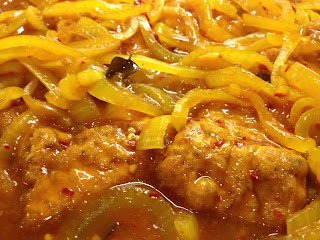Koeksisters (pronounced - cooksisters) a very South African confectionary delicacy has been enjoyed amongst the different communities for a very long time. A very good description of Koeksisters is:
"A koeksister or koesister comes from the Dutch word koekje, which translates to 'cookie'. It is a South African syrup-coated doughnut in a twisted or braided shape (like a plait). It is prepared by deep-frying dough in oil, then dipping the fried dough into cold sugar syrup. Koeksister are very sticky and sweet and taste like honey.
Koeksistes are of Cape Malay origin. The Afrikaner version is much more syrupy and crisp while the Cape Malay version's texture is more like that of a cake, spicier, and usually covered in dried coconut." (Wikipedia) South African history reflected in food!
I grew up under apartheid and in my 'Coloured' (mixed race) community the Cape Malay version was sold by 'aunties' in the community. There was Aunt Julia, literally our neighbour at the back, whose plain koeksisters were doughnut shaped but coated with coconut, Aunt Sally whose plaited koeksisters were spicy and a few other ladies and then, there was me!
My aunt taught me how to make a plain koeksister using a potato recipe which I've come to perfect over years by adding spices, etc. Instead of selling from home I went from house to house selling..... oh those days! It was a Sunday morning only operation, selling early enough so people could have it with their first cuppa of the day! On a good Sunday I would make up to 1200 koeksisters and sell it all....... getting up at around 2.00am in the morning.
I make my koeksisters pretty much as described above except (using my own recipe of course) that I wait for the koeksisters to cool off before dunking them in slow boiling syrup.
I've left a legacy in the community of my hometown Grahamstown RSA as everybody remembers me fondly as the koeksister man!

































